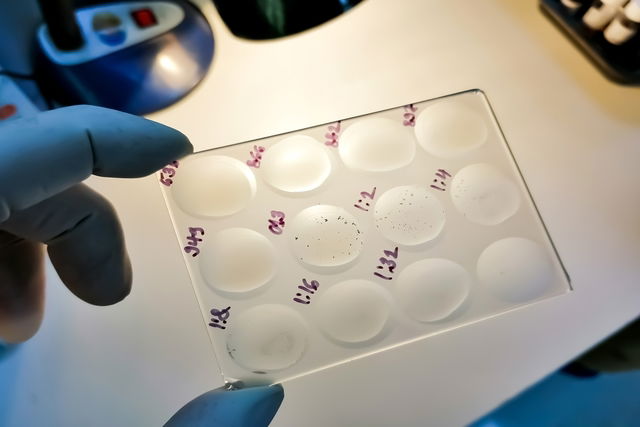The VDRL test, which stands for Venereal Disease Research Laboratory, is test that serves to diagnose and monitor the response to the treatment of syphilis, which is a sexually-transmitted infection caused by Treponema pallidum bacteria.
This test is done by collecting a blood sample and analyzing it for the presence of circulating antibodies. The antibodies are reported as a value to determine the severity of infection.
Although VDRL is one of the main tests to diagnose syphilis, it can provide a false-positive result. This means that the person may have other diseases that can cause positive antibodies, such as leprosy, tuberculosis or hepatitis. Therefore, a syphilis diagnosis should be confirmed with other tests.

What is it for
The VDRL test is used to diagnose and monitor the treatment of syphilis. This test is indicated when the person has had unprotected sex, or if he or she presents with signs or symptoms of syphilis. It is also ordered during pregnancy, to screen for the the bacteria, as it can be transmitted to the baby.
Syphilis is a sexually.transmitted infection that is associated with the presence of wounds in the genital region. These lesions often do not hurt or cause discomfort and can often go unnoticed. However, if left untreated, the bacteria can remain in the body and lead to the development of more serious forms of the disease.
Also recommended: Main Symptoms of Syphilis & When Do They Appear tuasaude.com/en/syphilis-symptomsHow the VDRL test is done
The VDRL test is done by collect a blood sample and sending to a laboratory for processing. The sample is added to a glass plate and mixed with reagents, with several dilutions carried out to determine the extent of a reaction, which indicates disease severity.
It is common for the VDRL to be done in conjunction with the RPR (rapid plasma reagin) test. This test is also capable of identifying the presence of syphilis bacteria antibodies circulating in the blood. However, like the VDRL test, it does not specifically identify the Treponema pallidum bacteria that causes syphilis. If these tests come back positive, treponemal tests can be carried out, such as FTA-ABS and TP-PA. These are capable of confirming whether a syphilis is present and can differentiate current and past infections.
Fasting is not necessary for this test, and results are usually reported between one and seven days.
Interpreting the result
The VDRL result is reported in titers: the higher the titer, the more positive the test result. The VDRL test is determined to be positive (or reactive) or negative (or non-reactive).
A negative result means that the person has never come into contact with the bacteria that causes syphilis or it means that they have been cured.
A positive result normally indicates that the person has syphilis, however there is also the possibility for a false-positive results due to cross-reactions that can occur. In these cases, it could mean that the person may have other diseases such as brucellosis, leprosy, hepatitis, malaria, asthma, tuberculosis, cancer or an autoimmune disease.
What does the positive result mean?
The result is considered to be positive when it has a titer of 1:16. This title means that even after diluting the blood 16 times, it is still possible to identify antibodies, In these cases. the doctor should be consulted so that treatment can be initiated.
Lower titers, such as 1:1, 1:2, 1:4 and 1:8 indicate that a syphilis infection is possible, as after one, two, four or eight dilutions, it was still possible to detect the antibodies. As there is a possibility, it is important to follow-up with the doctor for further testing to either confirm a diagnosis or rule out a false-positive result-
Low titers are also found in primary syphilis, in which antibodies circulate in the blood in low concentrations. This can also occur after treatment, in some cases. If a person has a history of syphilis, it is possible that they will present lower titers of the disease due to the persistence of antibodies in the circulation. However, it is important that treponemal tests are carried out to check whether this result is due to past infection or is indicative of an active infection.
VDRL test during pregnancy
The VDRL test is typically ordered at the beginning of pregnancy and often repeated in the second trimester, even if the result is negative. A pregnant women with syphilis may cause neurological defects in the fetus, and the woman may pass the infection on to the baby through the placenta or birth canal during birth.
Pregnant woman who are diagnosed with syphilis will repeat the VDRL test on a monthly basis to assess the woman's response to treatment and determine whether the bacteria has been eliminated.
Syphilis is normally treated with penicillin injections as ordered by the family doctor, infectious disease specialist or OBGYN.
